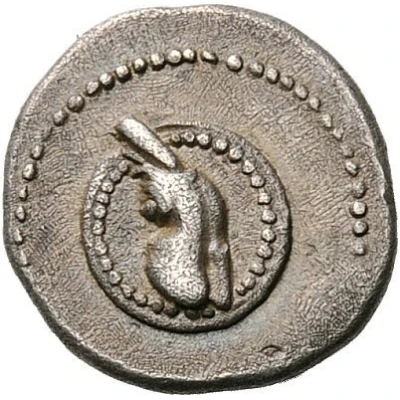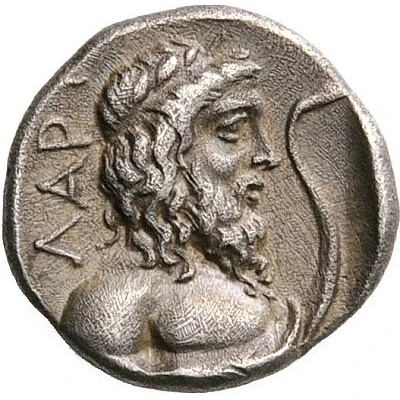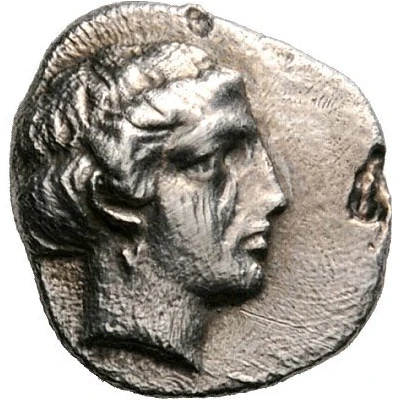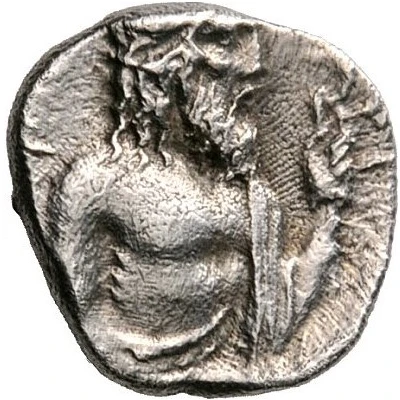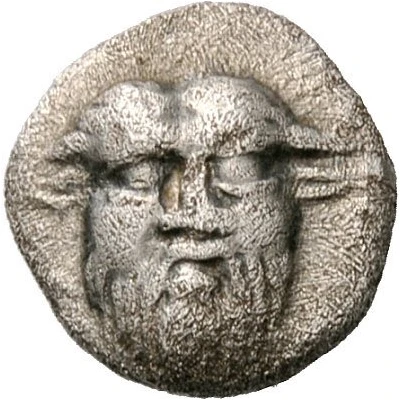
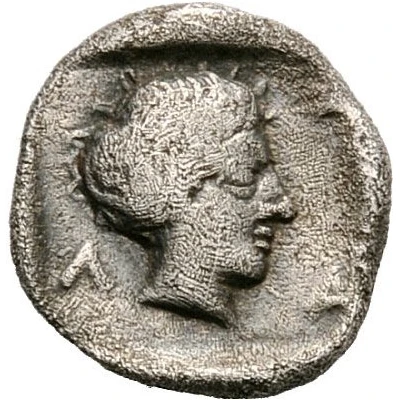

© Nomos AG
Trihemiobol 420 BC - 400 BC
| Silver | 0.99 g | - |
| Issuer | Larissa (Thessaly) |
|---|---|
| Type | Standard circulation coin |
| Years | 420 BC - 400 BC |
| Value | Trihemiobol (¼) |
| Currency | Drachm |
| Composition | Silver |
| Weight | 0.99 g |
| Shape | Round (irregular) |
| Technique | Hammered, Incuse |
| Demonetized | Yes |
| Updated | 2024-10-10 |
| Numista | N#171011 |
|---|---|
| Rarity index | 100% |
Reverse
Head of the nymph Larissa to right, her hair bound up at the back. All within an incuse square
Script: Greek
Lettering: Λ Α
Comment
Apparently unique and unpublished.
Interesting fact
The Trihemiobol coin from Larissa (Thessaly) was used as a form of currency in ancient Greece during the 5th century BC. Its name "Trihemiobol" comes from the Greek words "tri", meaning three, and "hemiobol", meaning a half-obol, which refers to the coin's value being equal to three half-obols. Despite its small value, the Trihemiobol was widely used in trade and commerce throughout ancient Greece, and its design has been found in many different variations, making it a popular collector's item among numismatists today.
